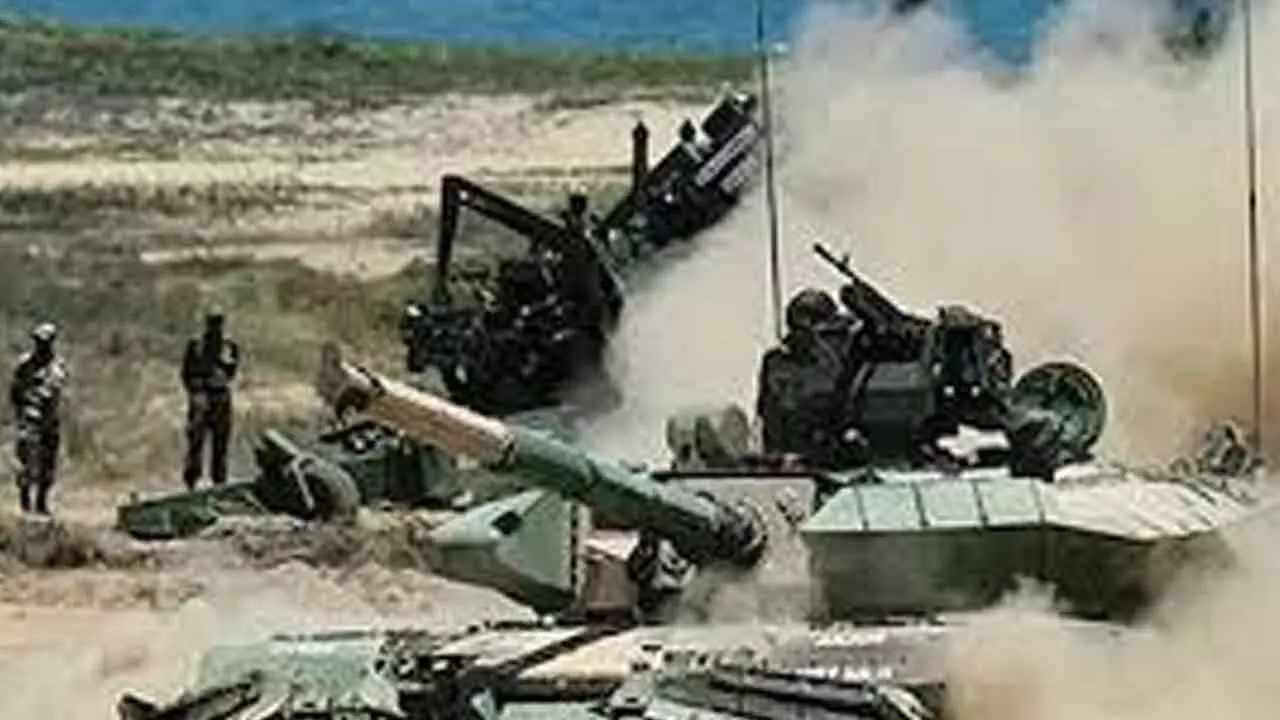After Pahalgam, India Sends Clear Signal With Defence Self-Reliance
Army undertakes a record Rs 85,000 crore procurement to strengthen readiness post-Pahalgam attack
After Pahalgam, India Sends Clear Signal With Defence Self-Reliance

Following the Pahalgam terror attack, the world's eyes are now trained on India. Inside and outside the country's boundaries, the security readiness of the Indian Armed Forces, especially the Indian Army, has come sharply into focus.
Indian Army's historic Rs 85,000 crore procurement drive will spur economic growth, strengthens self-reliance and prepare for the Pahalgam aftermath.
It is crucial to note that boosting the Indian Army's operational readiness is a continuous process that has kept on evolving. Capacity building over the years, modernisation of forces, and indigenisation efforts for tailor-made equipment whose supply is not dependent on foreign powers are all part of the robust steps taken in this direction.
The Indian Army's recent record-breaking investment in capital acquisition, particularly indigenous defence procurement, offers a clear answer to any potential questions.
Through an unprecedented Rs 85,000 crore worth of contracts signed over the past year, the Army has taken decisive steps to bolster its operational preparedness, signalling that it is equipping itself to meet emerging threats with speed and self-reliance.
The Army has, for the first time, utilised Rs 35,000 crore from its capital acquisition budget during the FY25, a 152 per cent increase from the previous year's Rs 13,900 crore spent.
Remarkably, 95 per cent of this expenditure was directed toward domestic vendors, reinforcing India's "Make in India" and "Aatmanirbhar Bharat" (self-reliant India) initiatives.
The procurement shows the Army's approach to modernisation, with a strong emphasis on indigenous defence production.
Of the 26 capital procurement contracts signed, only three were awarded to foreign vendors, showing a clear intent to bolster India's domestic defence manufacturing base.
The Indian Army's projected expenditure of Rs 1 lakh crore in FY25 is expected to have a powerful multiplier effect on the economy.
For instance, when the Army places orders worth Rs 1 lakh crore for various equipment with different indigenous companies, those firms hire more workers, buy more parts, and expand their overall operations.
The workers who get salaries then spend on groceries, housing, transport. The grocers, landlords, and others then have more income — and they spend too. That extra spending creates even more jobs and income in other sectors.
The economic impact is expected to extend beyond large companies, creating opportunities for small and medium-sized enterprises and generating skilled and unskilled employment across multiple regions, whether directly or indirectly.
The historic procurement milestones come amid efforts to reduce reliance on foreign arms imports and to develop an indigenous defence manufacturing ecosystem capable of meeting the country's growing security needs.
The trend toward localisation of defence manufacturing is viewed as an important contributor to India's long-term economic resilience.
The emphasis on local sourcing is also anticipated to benefit sectors such as precision engineering, electronics, and advanced materials, contributing to broader industrial growth.
Apart from that, heightened demand from Army procurements is likely to stimulate India's defence manufacturing corridors, encourage greater private-sector participation, and drive investments in research and innovation.
Officials say the economic benefits are already being felt. The heightened domestic demand is attracting new investments into defence technology start-ups, precision manufacturing, and research and development hubs.
India faces tensions on both its western and eastern borders. To the West, Pakistan and India continue to struggle for control over the Kashmir region, while Pakistan’s Navy has ambitions to become a 50-ship force within the next decade.
To the East, Indian and Chinese troops have skirmished along their shared – and disputed – 3,440km border. China is also playing an increasingly aggressive role in the Indian Ocean and South China Sea.
Attention now focuses on which procurement programmes India’s MoD will prioritise amid this geopolitical scenario and push to indigenise. Uncrewed aerial vehicles (UAVs) are expected to be a key focus area, with government ministers in aviation and defence previously calling for India to become a ‘global drone hub’ by 2030.
To make India a global hub for defence manufacturing, the government can introduce key reforms. For instance, the current two-year technology transfer policy can be relaxed to allow phased integration over 10 years, making India more appealing to foreign investments. Additionally, introducing more region-specific incentives and simplifying entry barriers can make India a preferred investment destination.
India’s reliance on imports makes the sector vulnerable to supply chain disruptions. The government can consider provisions to expand and strengthen public-private partnership modules and increase allocations under incentive schemes like the PLI. Additionally, addressing bureaucratic delays through streamlined, AI-driven processes can make defence operations more efficient.
Strengthening collaborations with advanced nations and negotiating strategic FTAs can enhance the supply chain of critical components, advanced technologies and clean energy.

